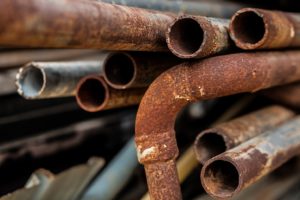 Plumbing system maintenance and regular repairs aren’t just about convenience and efficiency. Poor maintenance, an aging plumbing system, or other issues can sometimes cause plumbing problems that could increase health and safety risks in your home. Discover four situations where your plumbing could put your health at risk.
Plumbing system maintenance and regular repairs aren’t just about convenience and efficiency. Poor maintenance, an aging plumbing system, or other issues can sometimes cause plumbing problems that could increase health and safety risks in your home. Discover four situations where your plumbing could put your health at risk.
1. Dry P-Trap Letting Sewer Gases In
Did you know that each of your major plumbing fixtures has a trap under it? This includes your bathtub, showers, sinks, and toilet. The trap is crucial for a couple of different reasons. Mainly, it holds a section of pipe that remains filled with water. If you don’t use the appliance for several weeks, though, this water could all evaporate.
The problem with this is that then your fixture can release sewer gases from the sewer line that could rise up through the plumbing. When the trap is full of water, it blocks this backward flow of sewer gases. This protects your health because these gases are flammable and can irritate your respiratory system, cause headaches, and contain dangerous substances such as hydrogen sulfide.
When your plumber comes out for a plumbing inspection, have him or her check your plumbing p-traps to ensure that they’re present, in working order, and not leaking. The p-trap may also help prevent insect pests from climbing up through your drains.
2. Condensation or Leaks Encouraging Pests
You may think rodents and other pests will only move into your home if you leave plenty of food around the house for them. But in reality, pests may be drawn to your home if it provides them with shelter from hostile weather and a steady supply of water. Cockroaches and rodents can both increase health risks.
Some pests, such as silverfish and cockroaches, are so small that they only need tiny amounts of water to survive. Some insects may be able to survive on just condensation. One way to reduce condensation on your pipes is to insulate them. The insulation decreases the sharp temperature difference, acting as a buffer between the air and the pipe’s exterior.
3. Leaking Pipes Causing Mold
If you have a leaking pipe in your home somewhere, even if it’s hidden away under a cabinet or inside a wall, that leak may produce enough moisture to allow mold growth to take hold and spread.
Mold can be a health risk even to people who don’t have mold allergies, since it can still cause cold-like symptoms due to irritating your respiratory system. But mold in your home can be even more risky for people who have decreased immune function already or who suffer from other respiratory issues that could be compounded by a reaction to mold.
Fortunately, a professional plumber can help you identify, locate, and repair leaks even in hard-to-access locations such as inside your walls and in your crawl space.
4. Old Pipes Damaging Water Quality
Older pipes in older homes can actually lower your water quality. Often, this is because the pipes start to leach metals into the water. Corrosion is one common reason that pipes may leach metals into your water. Since corrosion can worsen over time, this issue can be most severe with older pipes.
The type of metal depends on what your pipes are made out of. Although most homes don’t have lead pipes anymore, some have galvanized pipes, which can release small amounts of lead into the water as their coating deteriorates. That’s because the zinc coating isn’t completely pure and may have small impurities that could include lead.
These are just four situations that can result in health risks popping up in and around your plumbing usage. Fortunately, professional plumbing care and regular maintenance can help you avoid these and other health risk situations. For more information on plumbing maintenance and safe plumbing usage, get in touch with Spartan Plumbing Inc today.
